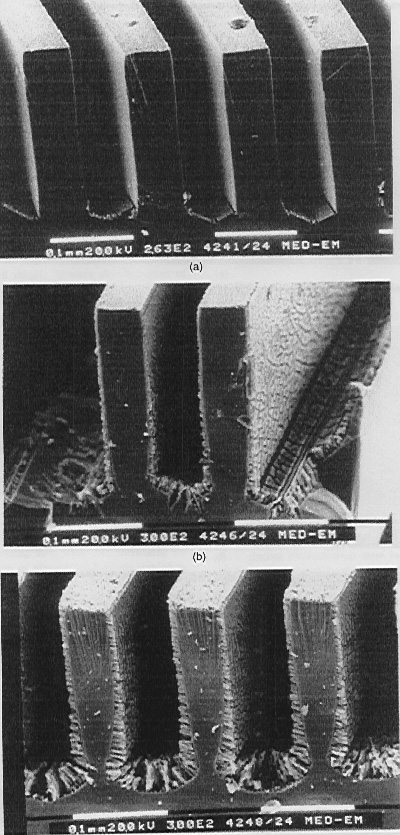

Picture for: How do you add the catalyst?
(Note: source has © on the figure)
These scanning electron micrographs are of microreactors following varying severity of anodic oxidation. Anodizing was done using a solution of hydrogen fluoride in ethanol. The level of current density increased from low (top photo) to medium (middle photo) to high (bottom photo). The microreactor trenches are 50µm wide by 250µm deep; each chip has 32 parallel trenches that are 10 mm long.
Enzyme activity experiments were done to test the effects of the varying porosity (and surface area) of the three microreactors. The experiments showed that the best results came from the microreactor shown in the middle; it had received moderate treatment. Its performance was 100 times better than an untreated, non-porous, reference microreactor. These Swedish researchers are attempting to develop a microreactor-based continuous glucose monitor for use by diabetics.
Source: Drott J, Lindstr` m K, Rosengren L, Laurell T. 1997. J. Micromech. Microeng. 7:14-23.